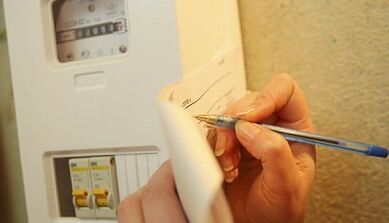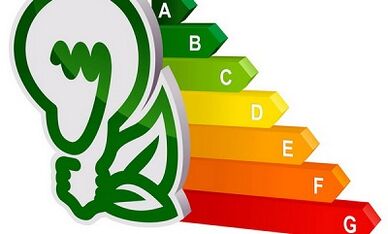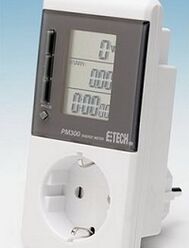The topic of power saving has caused a lot of excitement.People continue to look for all known (but still unknown) ways to do this more effectively.Today, we will share effective methods.
Of course, some of these methods are obvious, many have been used for a long time, but, despite this, the result information obtained and exists in the form of a small instruction that carefully consumes power.
Method 1.Do we really need so much light?

Statistics for all knowledge claim that 14% of all electricity generated is used for lighting.But do we always use this incredible extra energy without hurting ourselves?How to learn how to be correct?
These simple tips can help you solve:
- Use electric lights whenever possible.When people only have a daytime lifestyle, we do not urge you to return in the original period (although this is undoubtedly useful for our health: doctors prove that active night lifestyles and artificial lighting are exacerbations of chronic fatigue, depression and chronic illness).
- Don't forget that the lighting level of the room is affected by how much lighting equipment is contaminated.It's obvious that the plafon that hasn't been washed for months in the kitchen will be covered with a layer of dust and fat, and it will be very bad to pass through the light.Pure lighting significantly illuminates the entire room, which means you can use a light bulb.
- Don't forget the clean windows.Natural light and sunlight not only delay the time to turn on the lighting, but also heat the room during the colder season.
- For example, you can use it when lighting a room: do not turn on all the bulbs in the chandelier at the same time, you can also turn on: desk lamp (floor lamp) and 1-2 bulbs in combination.
- Modern Energy - Savings Equipment Can Help the Power Economy: Dimmers (rotating light - regulators smoothly change light levels), motion sensors, pulse relays, digital switches.The built-in automatic shutdown system is very effective at the entrance.
- We use energy-saving lamps (compact fluorescent lamps, LEDs).
- And it's very simple - turn off the lights when leaving the room (actually, this is probably the most difficult - in many houses, there's an ongoing "war" because everyone forgets to turn off the lights).
Have some knowledge about the advantages of saving lamps:
- More efficient power consumption (4-5 times less than incandescent lamps - charged energy).
- Large light output: The energy storage bulb at light intensity is about 12 W. The bulb is about 60 watts of a normal incandescent lamp.
- It does not emit a lot of heat energy (this characteristic can be used in small lighting equipment) and is more uniform and soft (usually, no more than 10% of the energy consumed into the light, no more than 10% of the remaining bulbs, no more than its heat).
- Generally, the service life of the light bulb is usually longer.Although it does not always correspond to the lifespan of the stated manufacturer.
Indeed, the latter is sometimes due to the fact that we cannot use certain energy completely correctly to avoid light bulbs.Usually, they burn in places where they are used for a short period of time, and the mode changes frequently: "On" - "Off".

If you replace the bulb step by step, it is best to start with a room where the bulb works for a long time.In addition, frequent voltage surges or vice versa, temperatures are very low, greatly affecting the working cycle.It should be remembered that some energy-efficient lamps (fluorescence) cannot be used by equipment that adjust the brightness of the lighting.
Over time, we all have to turn completely to energy-saving bulbs, as laws regarding energy protection state that incandescent lamps will be completely removed from the cycle and replaced with a more economical source of light.Therefore, it is best to start doing this in advance, as replacing all bulbs immediately is quite laid.
The disadvantages of energy-efficient bulbs are still high (although they are now much cheaper than 3-4 years ago), not always of good quality, and unfortunately, we lack the point to receive the lamp (this saving is very dangerous to us and ecology).
Well, if you can't replace the normal energy-saving bulb, use at least a smaller one.
Method 2.Multiple tax forms
Of course, the issue of using multi-tax instruments is not clear.But if we consider that some household appliances work around the clock (fridge) or are almost constantly in "sleeping" mode (TV, computer), and then considering the work at night, it will be beneficial not only to fans who work at night.
Furthermore, modern multi-tax tables consider electricity more precisely than induction.
Method 3.Useful savings
First, let’s consider whether we use household appliances correctly?
For many of us, the results of these ideas will be disappointing.It has been proven by experts that often consume more electricity with household appliances than is required for normal operation.
As we have already discovered, many household appliances (microwaves, TVs, power supplies, audio and video equipment, water heaters, computers, air conditioners and more than a dozen other devices) consume not only power in operating conditions, but also in "wait" mode, or as we often use in "sleep" mode.
Each of these devices consumes a lot of power separately.However, if you summarize the consumption of all the devices that work in "sleep" mode in our apartment, you simply can't get a small amount for account payments.
Therefore, for example, the average working time in the TV's "wait" mode is 19 hours, microwave 23.8 hours, and compact discs are 23 hours a day.
As a result, this is 5-10% of the total consumption of the apartment.
What is the way out?The output is very simple.Always turn off unused socket equipment.
Method 4.Technological miracle

Obviously, for everyone, you can't save too much with an old refrigerator or TV.15 - 20 years ago, household appliances can consume twice the consumption.
How to get rid of this situation: Buy modern and energy-efficient household appliances.How to find out the device or how energy efficient it is?
To do this, carefully study the energy efficiency labels that should be on household appliances.It has letter logos ranging from (highest energy efficiency) to G (lowest).
In modern devices, even in "wait" mode, power consumption is much less than outdated models.
As an example of an indication of energy-saving technology, such as a "smart" dishwasher or washing machine, they automatically dosage the cleaner, the amount of water used, and select the desired regime.According to experts, this device consumes 44% and 62% less energy compared to outdated models in the late 1990s.
Not worthy of the compelling advantages of modern technology.But what if not everyone can replace old household appliances with new (usually expensive)?In this case, how to reduce the cost of electricity?
Method 5.We use what we have
refrigerator
How to use the refrigerator, maybe everyone knows.But, despite this, we stubbornly continued to place it next to the battery, near the stove or wall next to the sun.
But it is obvious that efficiently working refrigerators heated from nearby heat sources will consume more electricity.
Also, if you want to be in the room where the refrigerator stands, not hot (about 18-20 degrees), the refrigerator should be melted regularly and released from the ice, check its tightness (sealed on the refrigerator door), and do not put it near the wall for better air circulation.
Also, you should not buy a large refrigerator just because of your neighbors in the kitchen, or the same as your neighbors (taken from the number of family members and their needs).The bigger the refrigerator, the more energy it consumes.
Vacuum cleaner
In order for the vacuum to operate properly, the accumulated dust must be cleaned regularly (15-20% of dirty consumption) and consider that it uses the most power it uses when it is turned on and off (try not to turn it off often if you vacuum the small room).
Electric stove
Electric furnaces consume a lot of electricity.How do I lower the electricity cost in this case:
- If the recipe for cooking dishes is not provided, please do not preheat the oven in advance.
- Use the remaining heat from the fireplace (close 5-10 minutes before cooking).
- Close the pot with a lid.
- Do not use excess water when cooking vegetables and eggs.
- Use good dishes with flat bottom and burner size.
- Use a stress chef.
- When buying enough power kettle for the entire family, use an electric kettle (which consumes less power than the electric stove) and pour it into the water in it at once.
- Using a microwave and toaster, you can cook equally delicious and crispy dishes in the oven in just a few minutes.But this is much faster and therefore more economical.
washing machine
Washing machines can take up to 15% of household electricity.All possibilities for economical consumption are provided by your washing machine instructions:
- Fast, economical washing mode.
- Full load, but no overload (excessive load increases power consumption to 10%).
- Lower temperatures (not always should be washed at high temperatures).
- Correctly selected machine operation mode.
iron
- Here you can also use the principle of residual heat, which is to turn off the iron 5-10 minutes before the ironing is over.
- Do not dry the linen: To touch it, you will have to spend more time, so use more electricity.
- Unexpected flax also requires additional power consumption.
- Use a hardcore with automatic shutdown function.
- Use the correct mode to iron different types of fabrics.
air conditioner
- Set the temperature enough to cool the room correctly.
- Make sure to close all windows and doors before opening.
- When purchasing air conditioners, focus on the size of the room and the number of people that will be in it.The device is designed for large areas and can only "eat" electricity without any benefit.
- Clean the fans and filters regularly.
computer
Today, almost everyone has a computer, not even a single one.And, obviously, this greatly increases the cost of electricity.
What can we do?
- Reduce the brightness of the monitor (this can affect energy consumption).
- If you do not use your computer for a long time, turn off the computer.
- Turn on all peripheral devices (scanners, printers, modems) through a network filter and always turn them off when they don't work.
- If possible, use an LCD monitor.
- Use a laptop more frequently (less energy "eat" than a fixed computer).
Heater
The cold on the street and at home made us absorb the heater from the storage room.Isn't there any warmth in the house?what to do?Furefution doesn't want to get sick.So you have to include the "Eater" power-heater.
In order to reduce the heater's usage time in some way, you need to isolate everything possible: windows, walls, floors, etc.Of course, plastic windows do this well.Well, if the window is normal, try closing all cracks and cracks in the window frame.It is through them that up to 50% of the calories are gone.The front door must be the same.
If central heating is on, but it is still cold?
There may be many reasons.But in some cases, it will help to simply clean old batteries, replace or increase their heat transfer factors.
Well, if possible, try using heaters and they are very "greedy".
Additionally, as an option for additional heat sources in your apartment, you can consider heating towel rails connected to your hot water supply.
Interesting

There is a very useful device.It is called the "home tile meter".
Why do you need it?This will help save power.With the help of this small device, you can learn a lot of interesting things about the work of household appliances and the spending of electricity in your house.
For example:
- How much do you pay for a computer that doesn’t turn off all day?
- How much electricity does your refrigerator consume, and it's time to change it to new power?
- How much electricity does it consume when washing dishes, laundry, brushstrokes, or drying your hair in a dishwasher?
- How much energy does your TV consume in non-state?
You will receive answers to all of these questions and many others, and you will also find out how much electricity you spend without the benefit and what you can really save.
Obviously, saving power is not difficult.The main possible obstacle may be ourselves.Once we realize that it is profitable to waste electricity without vain, first of all, for us, we will succeed.
























